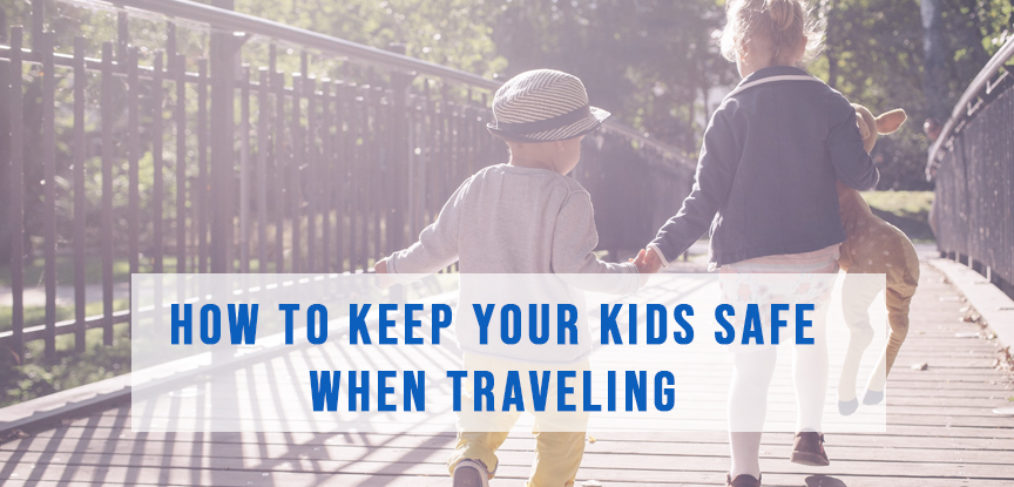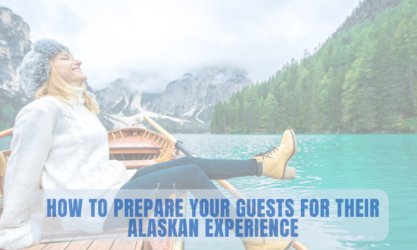
How to keep your kids safe when traveling
Balancing a love of family adventures with keeping kids safe doesn’t have to hold you back when traveling. We love watching kids discover what makes Alaska so great, but we know that parents can be a little unsure what to teach their children about safety around bears, moose and our great open spaces. That’s why we we’ve gathered up some simple safety strategies for keeping kids safe when traveling.
When visiting Alaska, teach children to be bear and moose aware
Alaska has abundant wildlife that people come from all over the world to see, and it’s very likely you might run across black, brown, or polar bears and moose in their natural habitat in your travels. There are moose as well as black and brown bears close by our area near Anchorage and Eagle River, fishing in streams or wandering hiking trails just like many of the tourists and residents like to do. The best thing to do to help keep kids safe around moose and bears is to teach them to be aware. This includes:
- Always keep your eyes and ears open for a sight or sound of bears and moose nearby
- Kids that use earbuds should turn them off when in bear or moose territory
- Children should always stay together, never wander off alone
- If they see a bear or moose, immediately tell an adult
- Do not run if you see a bear or moose, slowly walk backwards or sideways away from them
- Do not try to feed bears or moose. Do not throw things at them
- If you see baby bears, or a baby moose, don’t try to pet or feed them – no matter how cute they are! Momma is most likely very close by and will be angry.
Learn the “stop and spin” technique
Often when children think they are lost, their parents are nearby, but they can’t see them. Teach them the “stop and spin” method for when this happens: First, if you think you are lost and can’t see your parents, stop where you are and don’t move. Next, slowly turn in a circle and look all around you for either parents or siblings. They might have just moved a few feet, other tourists might have stepped in between you, etc. Turn a full circle while carefully looking. Then do it one more time. Often, this can help you child to keep from panicking and realize they are not lost. But, if they do this twice and don’t see anyone familiar, then move on to the next tips.
Point out safe people and in charge adults
For each location you travel to, such as amusement parks, zoos, museums, hiking trails, boating excursions, etc., take a moment when you first enter to point out safe adults they can approach if they get lost. This can include employees with uniforms or name tags, uniformed security guards, police or first responders, park rangers, boat captains, trail guides, and more. If none of these types of people are around, a backup plan can be to look for a mom or dad with children of their own to approach.
Teach children important identifying information
As young as possible, teach your children their full name, mom or dad’s full name, and at least one of their parent’s cell phone numbers. Before you leave for a trip, have a plan for what to do if they get lost. For instance, you could tell your children to approach either a police officer, another mother with kids, or a store/park employee and say “I’m lost. My name is ______. My mommy’s name is ______ and this is her phone number ______.”
For children too young for this, you can use bracelets or temporary tattoos that can be labeled with important information such as your name, phone number, etc. and have kids wear them whenever you go out, like these from SafetyTat.
Talk to kids about your destination before you get there
Most popular travel destinations offer free online maps that often can be downloaded and printed out. Or if you have time you can request maps be sent to you in the mail before your trip. These are great ways to include your children in trip planning, and familiarize yourself with meeting spots if someone gets lost, where bears or moose might be hanging out, etc.
More easy safety tips:
- Dress your children, and yourself, in bright colors when visiting crowded places so it’s easy to spot one another.
- Consider a buddy system with an older child and a younger child if your children have wide age ranges.
- Take a photo of your family when you first enter parks, museums or crowded events. It’s a great way to get a photo of everyone before they tire out, and it will come in handy if someone gets lost and you need a photo and description of what they are wearing.
Keeping kids safe while traveling and adventuring in Alaska doesn’t have to be scary or keep you from doing what you love. Educate children about the issues, practice ahead of time, and implement these ideas when traveling and you’ll all have a much more fun and stress-free trip.


